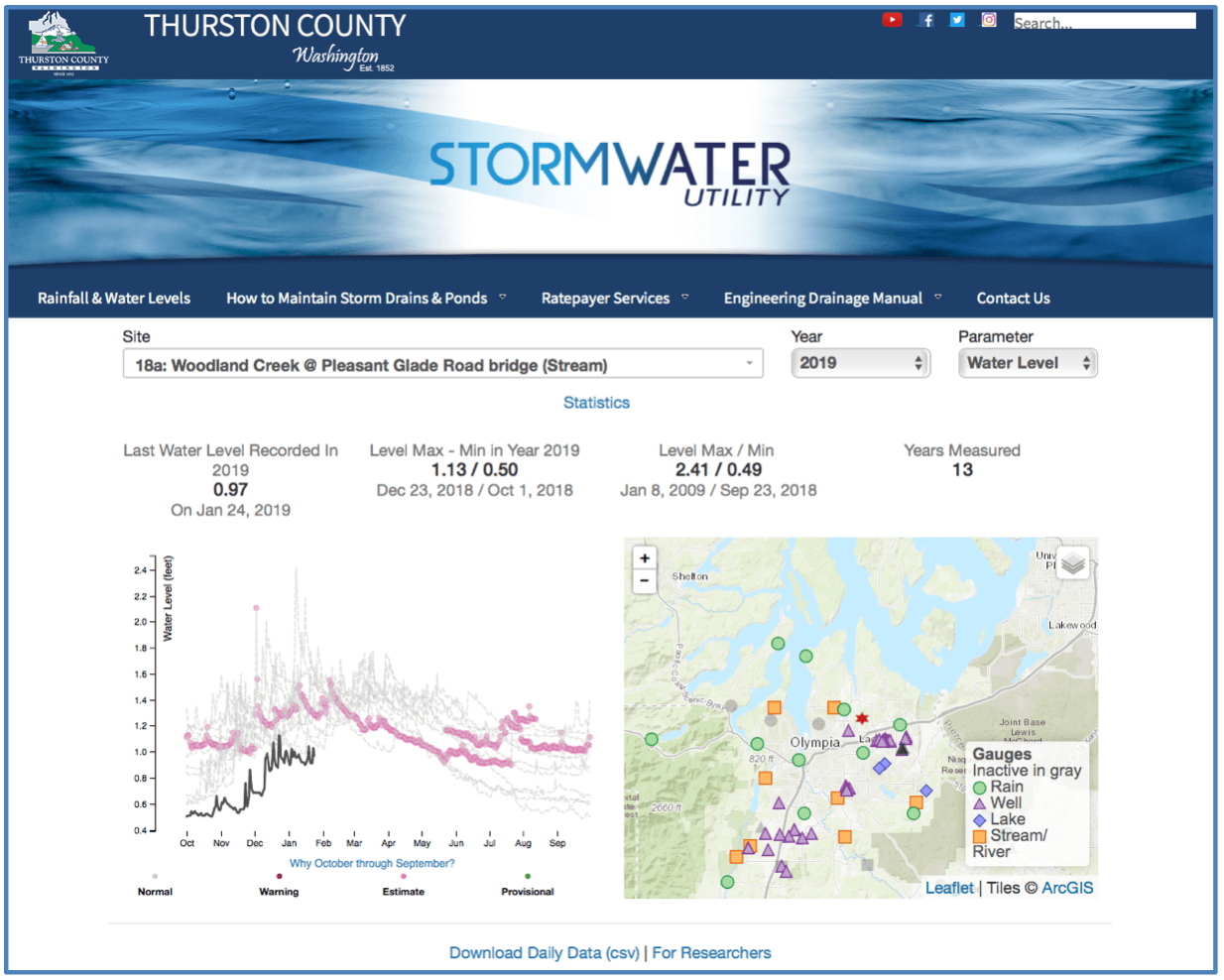Managing public resources with cellular IoT
Smart water management in Thurston County, Washington
ABOUT
Cellular IoT for water management
Located in Washington State at the southern edge of the Puget Sound, Thurston County is home to 250,000 residents and the site of the state capital, Olympia. With direct access to the Puget Sound and the Capitol State Forest, the county is also rich in natural beauty and opportunities for outdoor recreation. 16 lakes make up 6.7% of the county’s total area, making fishing and boating popular activities for county residents. Cellular IoT connectivity helps make the job of managing all that water more reliable, less expensive, and more transparent for county managers and residents.

Thurston County Water Resources SpecialistThe built-in Soracom user console and API made a real difference as the team moved from design and architecture to deployment in field… It would have taken twice as long to get most of our sites up without it.
CHALLENGE
A big job for a small team
Thurston County is responsible for everything from flood prevention and groundwater safety to setting boating speed limits based on lake levels. That demands constant fieldwork from a small team. Water Resources managers are responsible for everything from tracking weather and monitoring groundwater, lake, and stream levels to finding and clearing beaver dams and identifying potentially hazardous conditions or seasonal high-water issues. Remote monitoring lets the team do its work more effectively and more efficiently.
SOLUTION
Remote monitoring with cellular telemetry
In 2016, Thurston County committed to establishing a county-wide network of sensors to improve real-time data collection and reduce the staff time required for fieldwork. Instead of driving to remote areas to check for potential hazards like new beaver-dam construction, county staff can monitor water levels daily or even hourly to identify when human intervention is required.
Data from five sites is currently updated hourly, with ten more sites expected to go live by June of 2019. (If you’re curious, you can check the public dashboard here: https://www.thurstoncountywa.gov/sw/Pages/monitoring-dashboard.aspx). This data stream lets the county observe water levels and weather data without leaving the office, and interconnect with other jurisdictions for flood prediction.

Thurston County groundwater, stream & rainfall dashboard
For every resident of Thurston County, this means faster, more immediate feedback on water conditions and more efficient county services. For those living near lakes or in flood-prone areas, the benefits are even greater.
WHY SORACOM
Affordable, knowledgeable, and easy to manage
For a network of sensors distributed across an area of almost 1,000 square miles, cellular connectivity is the obvious solution. Thurston County tested with larger mobile operators but was frustrated by their high cost of service and inability to offer meaningful technical assistance with the challenges of IoT deployment.
Working with new equipment from multiple different vendors, the county needed a connectivity partner who cared enough to get in the weeds and help work through different configurations and settings until the team got everything to work. The team found that Soracom was not only more affordable for their use case but also more willing and able to help. And Soracom’s ability to offer coverage across multiple networks ensured the best possible signal strength in remote locations.
The built-in Soracom user console and API also made a real difference as the team moved from design and architecture to deployment in field. As Thurston County Water Resources Specialist Nathaniel Kale explains, “The ability to see a detailed history of connections and the status of each SIM is extremely useful when trying to debug issues with modems and custom hardware. It would have taken twice as long to get most of our sites up without it.”

FUTURE PLANS
County-wide coverage
By June of 2019, Thurston County’s water monitoring network will have tripled in coverage since it was first deployed, and plans are in place to expand monitoring capability to 90 locations around the county.
